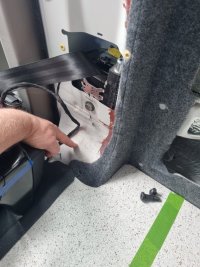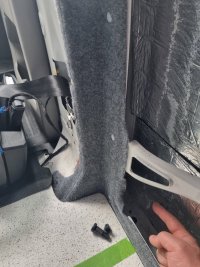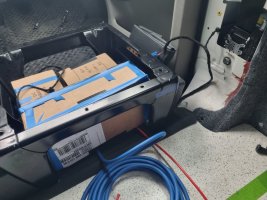I am trying to figure out the best way to route cables from under my drivers seat base (which will have various bits of kit installed) to the void in the side panel behind the B pillar and then along the void to an electrical compartment under my furniture.
I am wondering about drilling a hole in the base of the B pillar (as pointed to in the photo) but it's very close to the seat belt anchor point and I'm worried it's a structural point. Alternatively I go through the floor under the driver's seat, along the void under the van and back up through the floor at a convenient point further back. Thinking I'll have to use flexible conduit, glands etc if I go this way.
I would love to know how others have routed cables from their seat base builds to the back of the van.
Look forward to hearing your thoughts.
Many thanks
Tim



I am wondering about drilling a hole in the base of the B pillar (as pointed to in the photo) but it's very close to the seat belt anchor point and I'm worried it's a structural point. Alternatively I go through the floor under the driver's seat, along the void under the van and back up through the floor at a convenient point further back. Thinking I'll have to use flexible conduit, glands etc if I go this way.
I would love to know how others have routed cables from their seat base builds to the back of the van.
Look forward to hearing your thoughts.
Many thanks
Tim



